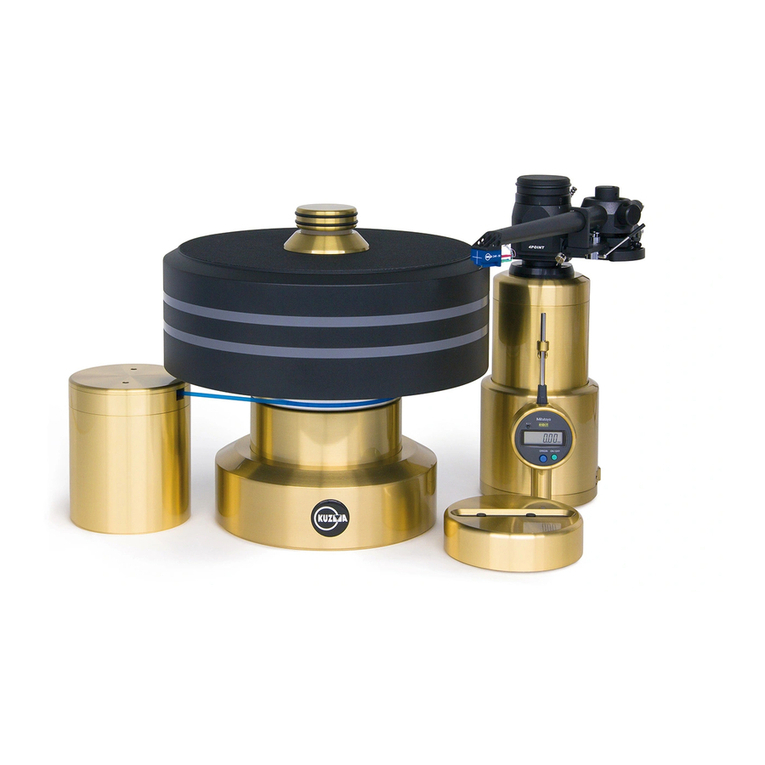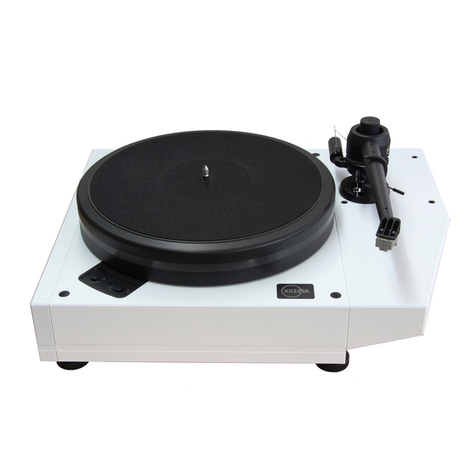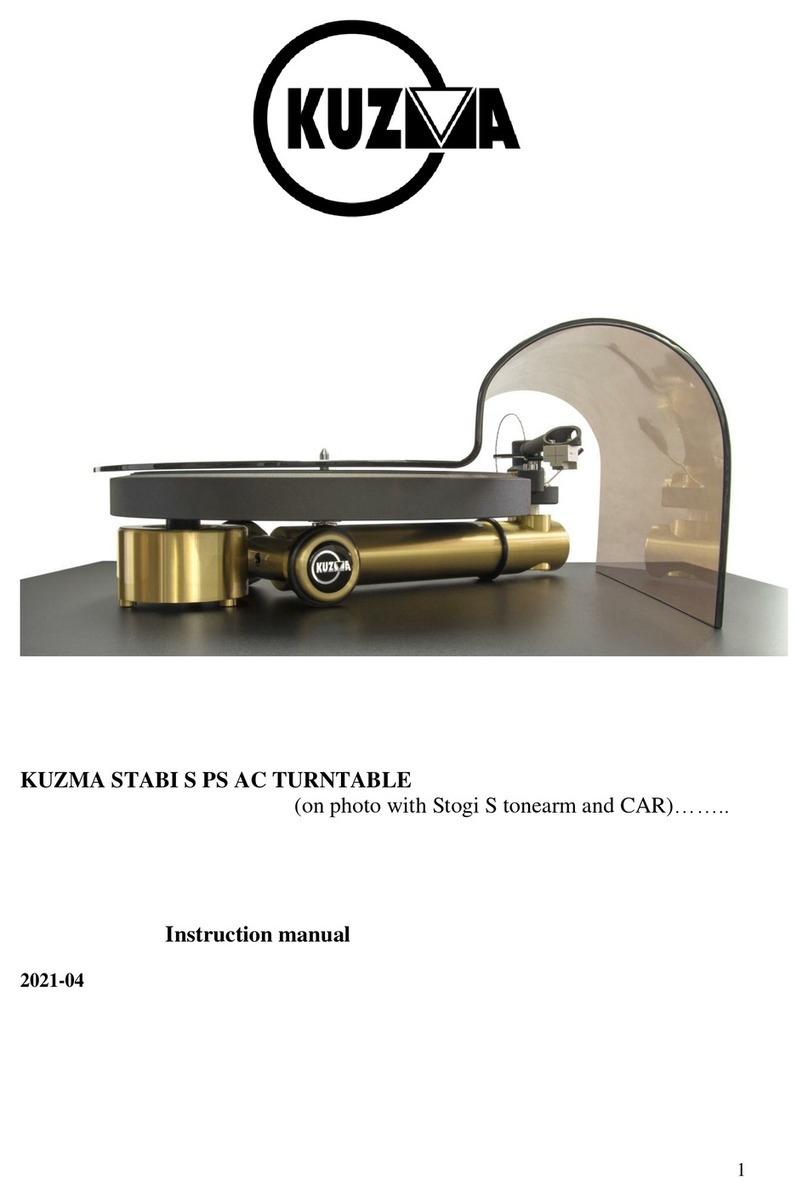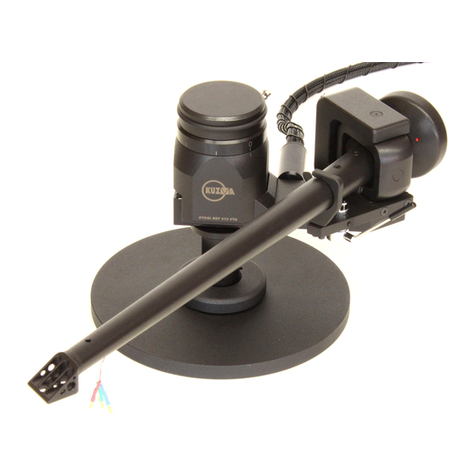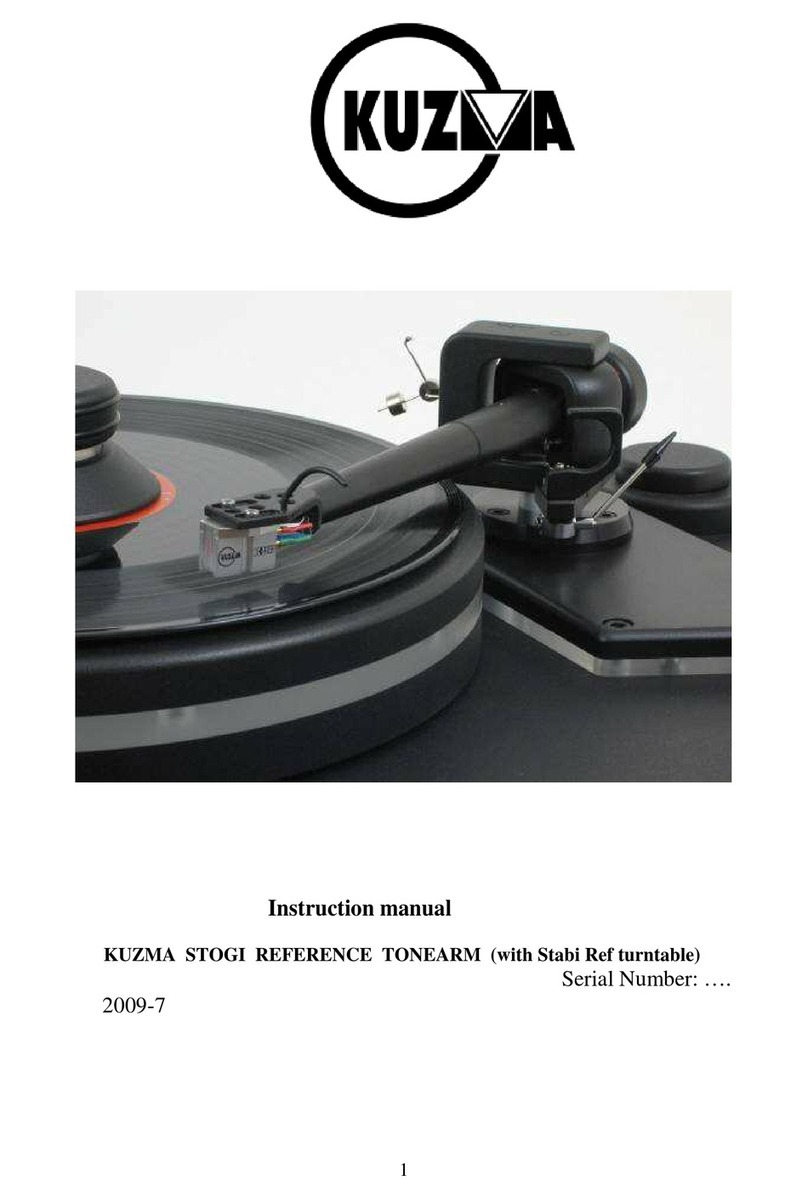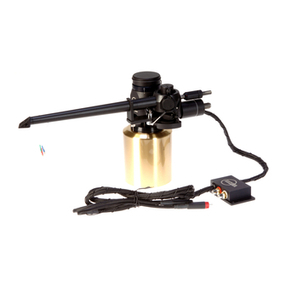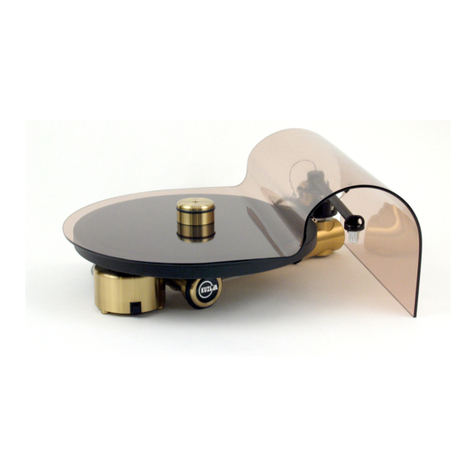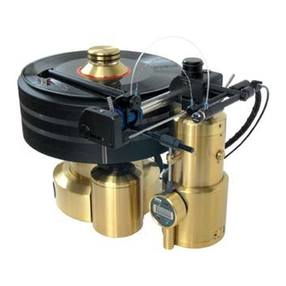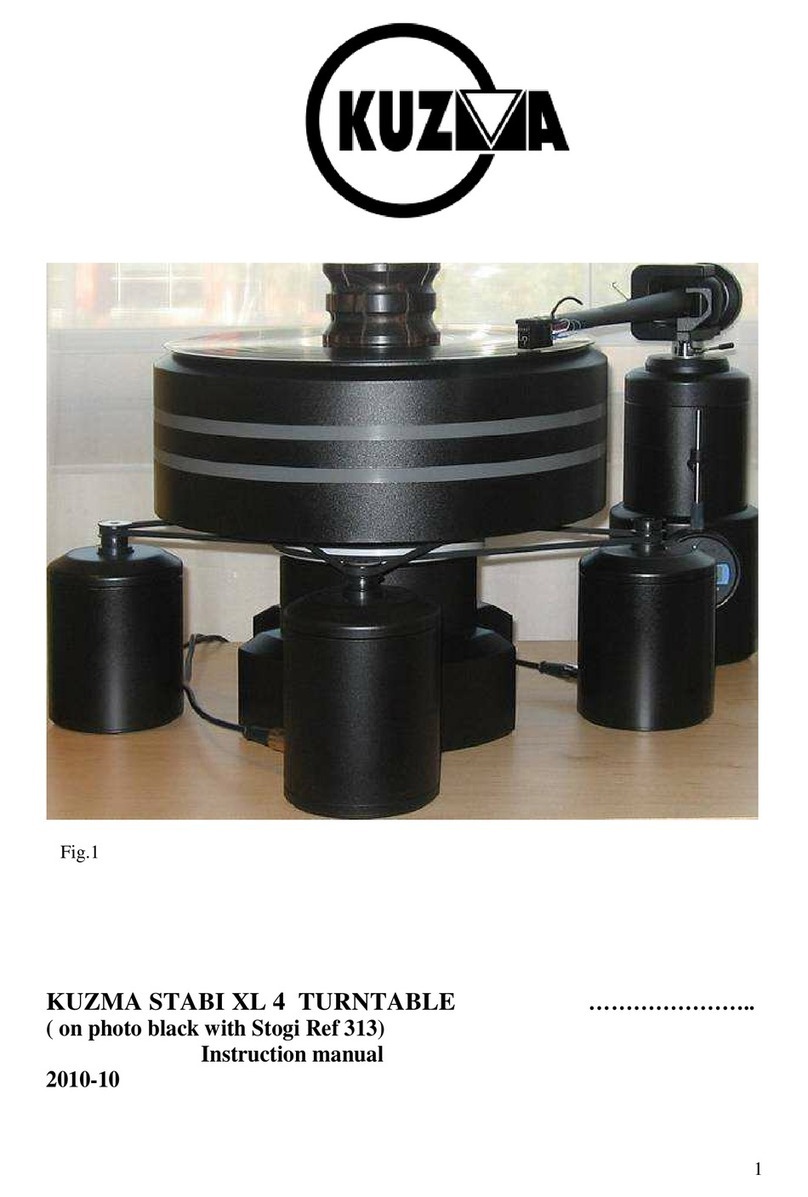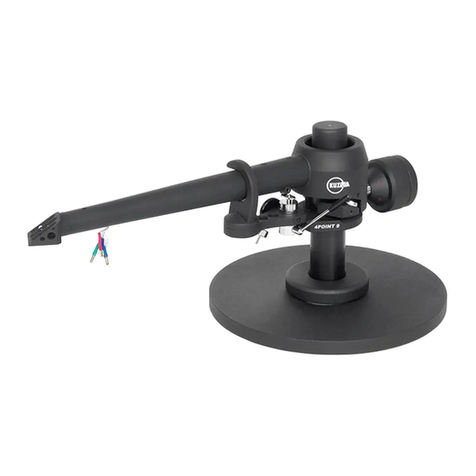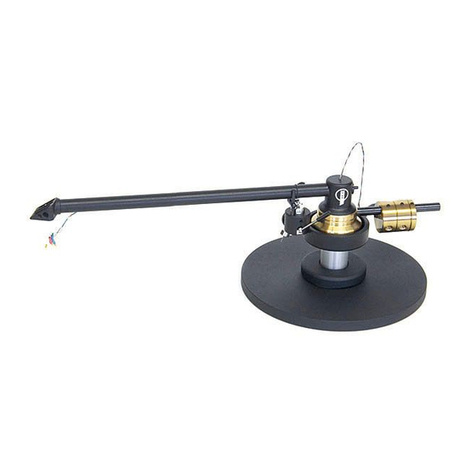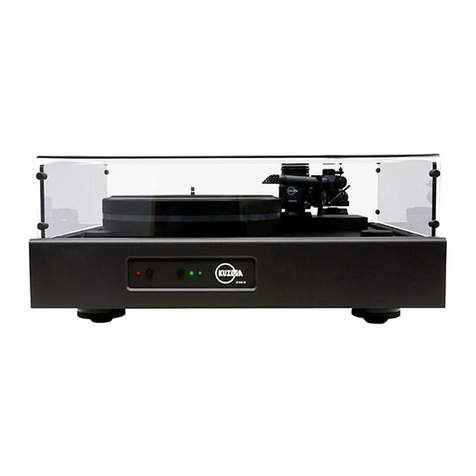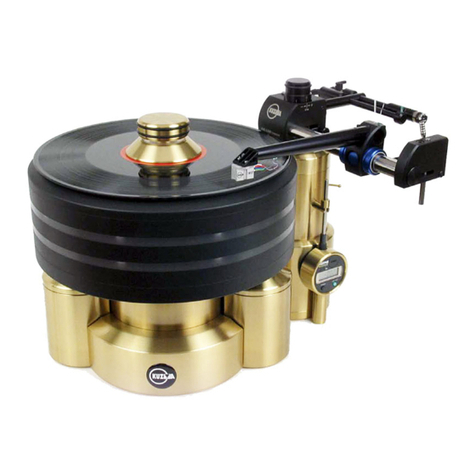General Description: The turntable is packed in three boxes. Some parts are very heavy so
handle boxes with care .
The base is of solid brass which is clamped together from two pieces and has good damping
properties. The main shaft, which is 28 mm in diameter, is fixed into this base. The platter is
a sandwich construction of aluminium and acrylic plates screwed together in a pre-stressed
form to damp all unwanted vibration. Hard non-metalic material is used for the bearing
which, together with a ruby ball, is lubricated in an oil pool to provide one point contact
ensuring minimal vibration and noise. The position of the platter is further stabilised by a
sliding non –metal ring, precisely matched to the shaft diameter and immersed in a second
large oil pool.
Two motors are mounted separately in their own heavy brass towers. Two pulleys, via two
belts, give stable symetrical drive to the subplatter. The electronic power supply generates
controlled feed from a quartz to both motors, in such a way that the vibration of the motors is
minimised. A heavy threaded brass and acrylic clamp provides additional damping of
vibration caused by playback, as well as flattening curved records. The record is pressed
securely to the platter-mat, which is a semi-hard combination of rubber and textile.
The tonearm tower is a massive brass unit and the armboard can be exchanged to
accommodate various tonearms. The mass of the tower gives structural and damping rigidity
to the tonearm. The unit allows for VTA adjustment during playback without loss of rigidity
or azimuth. The movable part is supported via a linear ball bearing 30 mm in diameter and
100 mm in length. This gives firm support while allowing VTA to be changed. Adjustments
can be made over a range of 60 mm, each turn of knob representing 1 mm precisely. In order
to simplify adjustment, a micrometer gives a digital readout over a range of 12mm at an
exactitude of 0.01 mm. These adjustments are repeatable.
Stabi XL turntable :Technical data
Mass (total w/o PS) : 77kg
Platter: 22 kg
Base: 27kg
Motor towers: 2x 7kg
Tonearm tower: 14 kg
Speeds (fine adjust): 33, 45 rpm
Dimension: 450x 400 x 300 mm
Power supply: 110V or 240 V , 50/60Hz (factory set)
Optional: use of more than one tower, tower without VTA for Air Line tonearm,
Safety Precautions:
Electrical connection to the power supply from the mains comes via the cable. Please keep
PS away from moisture and be careful not to damage the mains cable. The same precaution
applies to cables feeding the motor towers.
